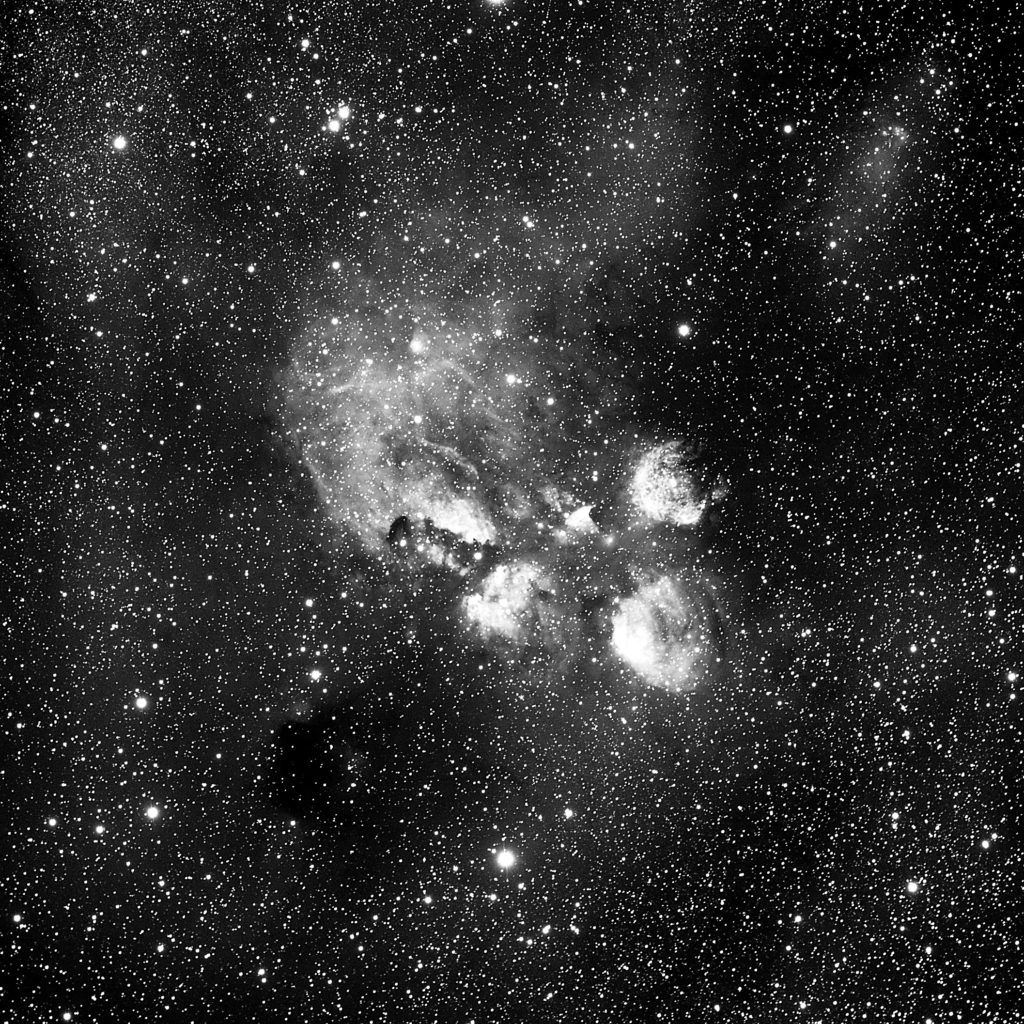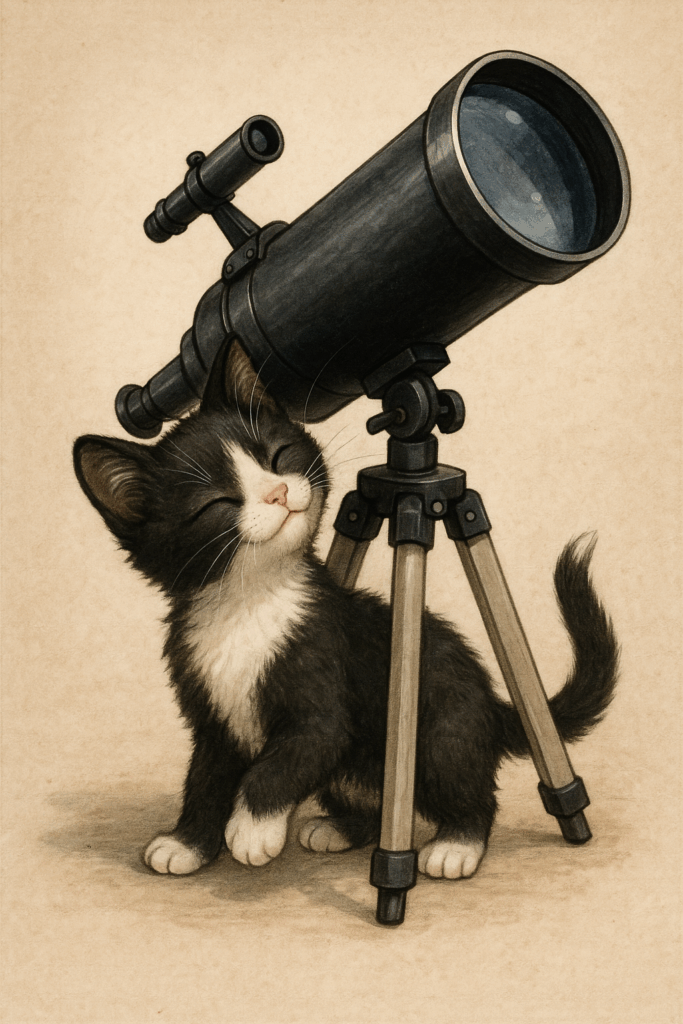Artificial Intelligence is a kind of dominant feature in the Hati and Skoll “From the Observacar” blog. In a recent blog, I introduced the astro-loving kitten Dinah. Dinah was, of course, Alice in Wonderland’s cat, perhaps not a real cat, but then neither was Alice real. She is such a delightful feline spirit that I asked Chat GPT for a drawing of Dinah as a kind of mascot for the blog, and here she is making her debut in Figure 1. More importantly I asked her (ChatGPT) how to preserve Dinah’s essence for future images. This is certainly the stuff that StarTrek is made of. So, apparently I have a rather unpopular opinion concerning M’Benga keeping his daughter in the transporter, until he can find a cure for her. Every single Trek fan that I’ve talked to that’s seen SNW COMPLETELY disagrees with me, saying it’s unethical to let him keep her in the transporter so her illness doesn’t get worse. But I should point out that ChatGPT and her kin have made our own a strange new world, and I think that we had better tame it, since we are never going to control it. Dinah, at least, is completely tameable!
Dinah loves all things astronomical, both historical and fictional, but especially equipment! For her debut, she has asked me to repost my astrophotograph of the Cat’s Paw Nebula (NGC 6334). It is from my black and white period, 2021 to be specific.

This image was taken with one of the Skygems Southern Skies remote telescopes, the Hakos Veloce 200 RH remote telescope in the Namibian desert. It is a stack of six 600 sec exposures. NGC 6334 is truly the anvil of the gods. It is a stellar nursery. Stars are literally being formed before your eyes. Well, in general, the time scale is a bit slow. It lies in the constellation Scorpius and was discovered by astronomer John Herschel in 1837. Herschel observed it from the Cape of Good Hope in South Africa. So pretty close!
NGC 6334 is located about 5,500 light-years away from Earth. The Cat’s Paw Nebula spans roughly 50 light-years across. It’s classified as an emission nebula, meaning it’s composed of clouds of ionized gas that emit light of various colors. The vivid red glow that dominates most images of NGC 6334 comes from hydrogen gas excited by the intense ultraviolet radiation from newborn stars within. Here we see none of this, since the image is in the glorious black and white of my youth.
Astronomers believe the nebula contains tens of thousands of young stars in various stages of development, many of them deeply embedded in the thick interstellar dust and thus invisible in optical wavelengths. That’s where infrared telescopes like those on board the Spitzer Space Telescope or the European Southern Observatory’s VISTA telescope come into play—revealing the hidden stellar nurseries within.
What makes NGC 6334 particularly fascinating is its star-forming activity. The nebula is estimated to have birthed stars as massive as 10 times the mass of the Sun—some only a few million years old, which is considered very young in cosmic terms.
Regions like the Cat’s Paw give astronomers a closer look at the mechanisms behind stellar evolution. By studying this nebula, scientists can better understand how massive stars form, how they influence their environments, and how stellar winds and radiation sculpt the surrounding gas into new star-forming knots and filaments. The “toes” of the nebula—bright, bubble-like lobes—are actually sites of intense star formation, glowing brightly due to the heat and energy of the new stars within.
Although it’s most widely known as the Cat’s Paw Nebula, NGC 6334 is sometimes referred to as the Bear Claw Nebula, depending on how its lobes are interpreted in images. No friends of Dinah’s are allowed to think this! She believes such misnomers represent the work of an ailurophobic cabal!
Dinah would also like me to add that the Cat’s Paw Nebula is only one of many celestial objects whose names honor cats. These include the Cat’s Eye Nebula (NGC 6543), Leo, Leo Minor, Lynx, the Cheshire Cat Galaxies (yes, I know more Alice), and the now vanished Felis.
Readers of “From the Observacar” are left to ponder whether there is any relationship between the Owl Planetary Nebula (of our previous blog) and the Cat’s Eye Planetary Nebula and this:
“The Owl and the Pussy Cat went to sea
In a beautiful pea-green boat,
They took some honey, and plenty of money
Wrapped up in a five-pound note.
The Owl looked up to the stars above,
And sang to a small guitar,
“O lovely Pussy, O Pussy, my love,
What a beautiful Pussy you are,
You are,
You are!
What a beautiful Pussy you are!”
Pussy said to the Owl, “You elegant fowl!
How charmingly sweet you sing!
O let us be married! too long we have tarried:
But what shall we do for a ring?”
They sailed away, for a year and a day,
To the land where the Bong-tree grows
And there in a wood a Piggy-wig stood
With a ring at the end of his nose,
His nose,
His nose,
With a ring at the end of his nose.
“Dear Pig, are you willing to sell for one shilling
Your ring?” Said the Piggy, “I will.”
So they took it away, and were married next day
By the Turkey who lives on the hill.
They dined on mince, and slices of quince,
Which they ate with a runcible spoon;
And hand in hand, on the edge of the sand,
They danced by the light of the moon,
The moon,
The moon,
They danced by the light of the moon.“
The Owl and the Pussy Cat
Edward Lear


Delightful, Dinah! Keep those stars in your eyes twinkling, David! 🤩